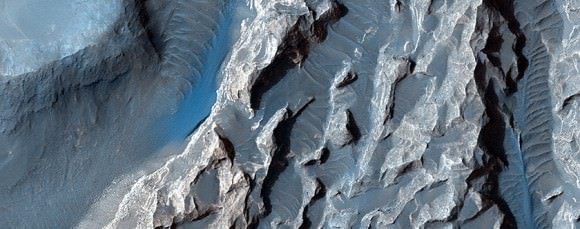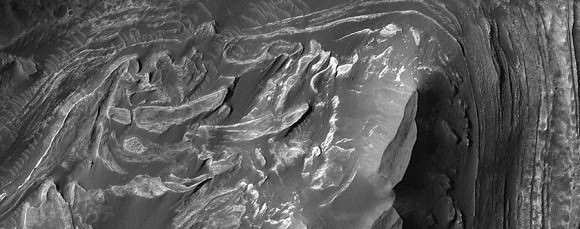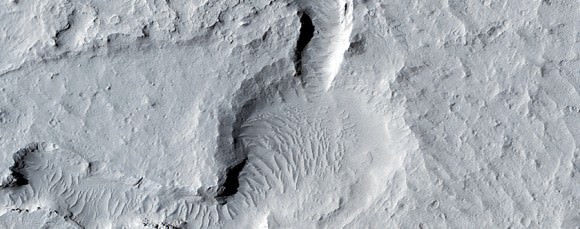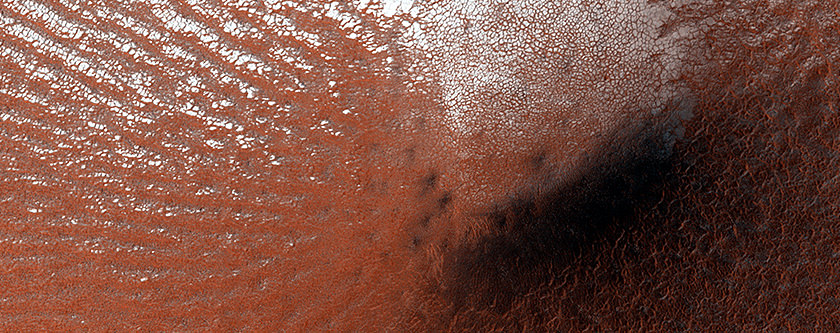Mars was once thought to be a fairly unchanging planet, similar to the Moon. But now we know it is a planet that was shaped by water and other forces in the past — and that these forces still come into play today.
Above is a picture of permafrost deposits just discovered in Louth Crater. This find comes from NASA’s Mars Reconnaissance Orbiter’s High Resolution Imaging Science Experiment (HiRISE) and you can see some of its latest water- and dust- shaped environments imaged below.
“A still-unexplained feature of this crater is the diffuse dark smudges visible on the crater floor,” read an update on the University of Arizona HiRISE website explaining this image. “These resemble ‘defrosting spots’ which are visible on carbon dioxide ice in the early spring, but they occur on frost-free areas and survive throughout the summer.”
The frost was caught in a HiRISE image early in the summer, and it persisted as controllers watched it through the summer — indicating that it is permanent. Its size did diminish somewhat, however. Scientists are pretty sure that this is water ice, as carbon dioxide can’t survive the summer.
See more new HiRISE photos below.




